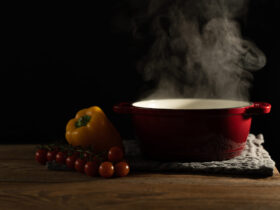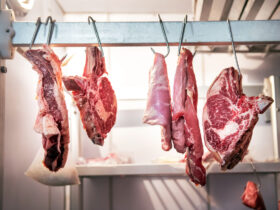General Information
Did you know that onion vegetables, much like cabbage, belong to their own botanical genus? Despite their unassuming appearance, these vegetables pack a punch when it comes to flavor and aroma. Some varieties are prized for their bulbs, while others shine with their tender leaves – and the best part? Both parts are entirely edible, offering a myriad of culinary possibilities.
Avoiding tears
Ah, the age-old battle with onion-induced tears. As Giacomo Casanova once mused, “Hot tears dry quickly,” but can the same be said for tears brought on by onions? When you slice into an onion, a cascade of gases is unleashed, irritating the eyes and causing tears. The exact composition of these gases and their effects on the eyes remain a mystery, but one thing is certain: the sensitivity to these tear-inducing vapors varies widely among individuals.
Avoiding Tears: While there’s no foolproof method to banish onion tears, there are some tried-and-true techniques to minimize their impact. Opt for a sharp knife to reduce cellular damage and gas release, moisten your hands and the onion to help bind gases, let fresh air circulate by opening windows, and consider chilling onions before cutting to minimize gas evaporation. And if all else fails, why not embrace the quirks of onion chopping with a touch of humor? Stick a matchstick in your mouth, practice some deep breathing, or don a pair of diving goggles for a laugh-worthy solution to tearful woes.
Aroma
One of the most captivating aspects of onion vegetables is their aroma, which can range from pungent and sharp to sweet and enticing. To preserve their delicate flavors, it’s best to cut onion vegetables just before use, as prolonged exposure to air can intensify their aroma while causing the loss of precious essential oils. And beware the pitfalls of overzealous chopping – while a quick blitz with a hand blender may seem efficient, it can result in an overpowering sharpness or bitterness in your dish.
Raw Food
For those seeking a sensory adventure, raw onion vegetables offer a unique tasting experience. The sharpness and bite of certain varieties are most pronounced in their raw state, adding a bold kick to salads, salsas, and dips. But fear not – when cooked, onion vegetables undergo a magical transformation, shedding their sharpness and developing a mellow, sweet flavor profile thanks to their high sugar content. This sweetness pairs beautifully with sweet or tangy ingredients, lending depth and complexity to a wide range of dishes.
Spring onions

Despite its name suggesting a seasonal availability, the spring onion stands as a constant presence in supermarket aisles throughout the year. This versatile vegetable, with its distinctively shaped whitish bulb and tubular leaves, adds a unique flavor and texture to a variety of dishes. Let’s delve into the world of spring onions and uncover their culinary potential.
Understanding Spring Onions
Contrary to what its name might imply, the spring onion is not limited to a specific season. Instead, it graces supermarket shelves year-round, offering a reliable option for home cooks and chefs alike. Characterized by its more or less pronounced whitish bulb and tubular leaves, the spring onion differs from its close relative, the leek, which boasts flat leaves. Its flavor profile sits somewhere between the mildness of leeks and the pungency of chives, making it a versatile ingredient in various cuisines.
Shelf Life and Preparation
When selecting spring onions, it’s essential to note their shelf life, which typically ranges from 1 to 2 weeks. However, an important tip to remember is to remove any rubber bands bundling the vegetables. These bands can create pressure points, leading to rotting in the affected areas.
Before incorporating spring onions into your culinary creations, a simple yet crucial step is to wash them thoroughly and trim the roots slightly. Additionally, if the spring onions appear sandy, it’s advisable to clean them as you would leeks, ensuring a grit-free finished dish.
Cooking with Spring Onions
While spring onions lend themselves beautifully to a variety of cooking methods, they truly shine when enjoyed raw. Their mild yet distinct flavor adds depth to salads, sandwiches, and dips, elevating simple dishes with a burst of freshness. Whether thinly sliced as a garnish or chopped and mixed into a salsa, spring onions bring a delightful crunch and subtle oniony flavor to every bite.
In conclusion, the spring onion’s year-round availability, versatile nature, and unique flavor make it a pantry staple worth celebrating. So next time you find yourself browsing the produce section, don’t overlook these humble yet remarkable vegetables. Embrace the versatility of spring onions and let their culinary magic elevate your dishes to new heights.
Leeks

Leeks, with their subtle flavor and versatile nature, are a staple in many culinary traditions around the world. From soups and stews to salads and side dishes, these elongated vegetables add depth and complexity to a wide range of dishes. Let’s delve into the world of leeks and uncover tips for selecting, storing, and preparing them to perfection.
Varieties and Shelf Life
Like many vegetables, leeks come in different varieties, each with its own unique characteristics. Earlier varieties, characterized by their long and thin appearance, tend to have a milder flavor compared to later varieties, which are shorter and thicker. When it comes to shelf life, fresh leeks can typically be stored for 1-2 weeks in the refrigerator. However, it’s important to handle them with care, as pressing them can cause damage and shorten their shelf life.
Preparation: Cleaning and Washing
Before diving into the culinary magic of leeks, it’s essential to prepare them properly. Begin by trimming the leeks closely from the root and removing any wilted or brown tips. While it may seem tempting to discard the top, dark green parts of the leeks, don’t be too hasty! Despite their fibrous texture and longer cooking time, these parts are incredibly flavorful, with a hint of cabbage aroma that adds depth to dishes.
When it comes to washing leeks, it’s not uncommon to find sand trapped between their layers. To remove it effectively, there are two tried-and-true methods. The first involves using a knife to halve the leek stem a few centimeters above the root, then washing the individual “leaves” under running water while bending them outward to reach the gaps. Alternatively, you can clean and cut the leeks as desired, then soak the pieces in water and wash them thoroughly.
Cutting and Preparation Techniques
Due to their fibrous structure, it’s best to cut leeks into relatively small pieces to prevent any bothersome fibers from detracting from the dining experience. A serrated knife is ideal for cutting leeks, allowing for clean, precise cuts that make cooking a breeze.
One popular preparation technique for leeks is stuffing. Precooked leek leaves can be easily filled with a variety of delicious fillings, creating a flavorful and satisfying dish. If a single leaf is too narrow for stuffing, simply layer several leaves on top of each other in a staggered manner to create a sturdy base for your culinary creations.
In conclusion, leeks are a versatile and flavorful addition to any kitchen. With a little care and attention to preparation, these humble vegetables can elevate dishes from ordinary to extraordinary. So next time you’re at the market, don’t overlook the leeks – they may just become your new favorite ingredient!
Onions and shallots

Onions and shallots, with their myriad of varieties and flavors, are foundational ingredients in countless culinary creations worldwide. From adding depth to savory dishes to enhancing the complexity of sauces and broths, these versatile alliums are essential in the kitchen. Let’s embark on a journey through the fascinating world of onions and shallots, from their diverse varieties to their preparation and cooking techniques.
Varieties: Exploring Diversity
The world of onions and shallots is rich in diversity, with variations in size, color, and taste. While yellow or brown-skinned onions are the most common, red and white varieties also grace the culinary scene. Smaller onions often boast a firmer texture and a sharper taste compared to their larger counterparts.
- Vegetable Onion: Known for its large size, soft texture, and mild flavor.
- Pearl Onion: These petite onions pack a delicate flavor punch, making them perfect for adding a subtle onion note to dishes.
- Red Onion: Contrary to its name, a red onion’s color is only skin-deep, with the outer layers displaying a vibrant hue that fades upon cooking.
- Shallot: With its elongated shape and nuanced flavor profile, the shallot offers a refined taste experience. Despite its higher price point, its unique sweetness shines through, especially when enjoyed raw.
Quality Recognition and Shelf Life: Selecting the Best
When it comes to choosing onions and shallots, quality is key. Look for specimens that are plump, firm, dry, and free from sprouts. While large onions may have a shorter shelf life than smaller ones, they still offer several weeks of freshness. White onions, with their softer texture and milder taste, tend to have a shorter shelf life compared to their yellow or brown-skinned counterparts. Late-season varieties are excellent for long-term storage, lasting for many months when properly stored.
Storage: Creating the Perfect Environment
To maintain the freshness and flavor of onions and shallots, proper storage is essential. Keep them in a cool, dry place with a temperature of around 0°C to +5°C. While onions may start sprouting after some time, this process typically takes several weeks. Avoid storing them in the refrigerator, as they prefer dry and airy conditions.
Preparation and Cooking Techniques: Mastering the Basics
Before incorporating onions and shallots into your culinary creations, proper preparation is key. Begin by trimming the root and tip closely, then peel off the remaining skin. Smaller onions are easier to peel after a brief blanching, steaming, or soaking in water, especially when working with larger quantities.
When it comes to cooking, the possibilities are endless. Raw onions offer a pungent and tear-inducing experience, but the gases responsible for this dissipate quickly when exposed to air or heated. Additionally, onions can add depth and flavor to broths and sauces, with their skins lending a beautiful brown color and roasted onions enhancing the overall taste.
For a creative twist, consider stuffing thick vegetable onions after hollowing them out slightly, adding a unique touch to your dishes.
In conclusion, onions and shallots are culinary powerhouses that deserve a place of honor in every kitchen. With their diverse varieties, versatile flavors, and myriad of cooking techniques, they elevate dishes from ordinary to extraordinary, adding depth, complexity, and a touch of culinary magic. So, the next time you reach for an onion or shallot, remember the endless possibilities they hold and let your creativity shine in the kitchen.














Leave a Reply
View Comments